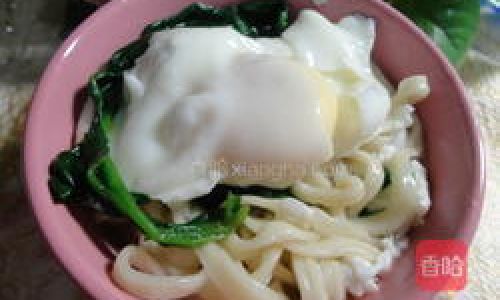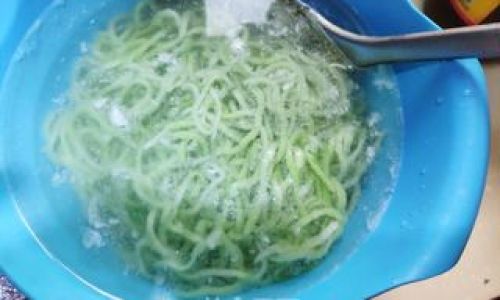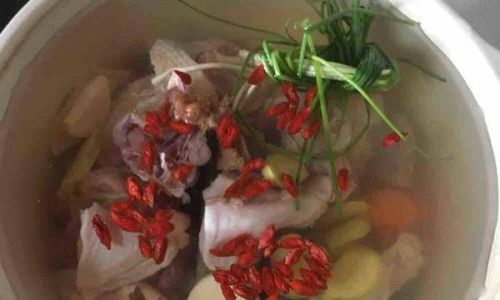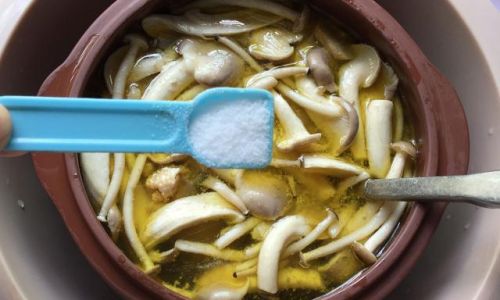Introduction
Spinach and egg noodles, a vibrant and nutritious dish, blend the earthy flavor of fresh spinach with the richness of eggs, creating a meal that is both comforting and wholesome. This recipe is perfect for those seeking a balance between simplicity and gourmet flair. Whether you’re a seasoned home cook or a novice in the kitchen, this guide will walk you through every step, from kneading the dough to plating a bowl of steaming, aromatic noodles. Let’s dive into the art of making spinach and egg noodles, a dish that promises to delight your taste buds and nourish your body.
Ingredients: The Foundation of Flavor
Before you begin, gather the following ingredients to ensure a seamless cooking experience:

-
For the Noodle Dough:
- 2 cups fresh spinach leaves (tightly packed)
- 2 large eggs
- 2 cups all-purpose flour (plus extra for dusting)
- 1 teaspoon salt
- 1 tablespoon olive oil (optional, for texture)
-
For the Soup Base:
- 6 cups vegetable or chicken broth
- 2 cloves garlic (minced)
- 1-inch ginger (grated)
- 1 tablespoon soy sauce (or tamari for gluten-free)
- 1 teaspoon sesame oil
- White pepper (to taste)
-
For the Toppings:
- 2 large eggs (lightly beaten)
- 1/4 cup green onions (chopped)
- 1/4 cup fresh cilantro (chopped)
- Red chili flakes (optional)
- Lime wedges (for serving)
Equipment Checklist:
- Large mixing bowl
- Rolling pin
- Sharp knife or pizza cutter
- Pot for boiling noodles
- Saucepan for soup
- Slotted spoon
- Fine-mesh sieve (for straining spinach)
Step 1: Preparing the Spinach Puree
The vibrant green hue of these noodles comes from fresh spinach, which also adds a dose of iron and vitamins. Start by blanching the spinach to retain its color and soften its texture:
-
Blanch the Spinach:
- Bring a pot of water to a rolling boil. Add the spinach leaves and cook for 30 seconds until wilted.
- Immediately transfer the spinach to a bowl of ice water to halt cooking. This step, known as “shocking,” preserves the green pigment.
-
Squeeze Out Excess Water:
Drain the spinach and gently squeeze it to remove moisture. Be thorough—excess water will make the dough sticky.
-
Blend to a Puree:
Place the spinach in a blender or food processor. Add 1 tablespoon of water and blend until smooth. Set aside 1/4 cup of puree for the dough; reserve the rest for another use (e.g., smoothies or sauces).

Step 2: Crafting the Noodle Dough
The dough is the heart of this dish. Achieving the right consistency is key to tender, springy noodles:
-
Combine Ingredients:
- In a large mixing bowl, whisk together the flour and salt. Create a well in the center.
- Pour the spinach puree, eggs, and olive oil (if using) into the well.
-
Mix and Knead:
- Using a fork, gradually incorporate the dry ingredients into the wet mixture. Once a shaggy dough forms, transfer it to a lightly floured surface.
- Knead for 8–10 minutes until the dough is smooth and elastic. It should feel firm but pliable, like playdough. If sticky, add flour 1 tablespoon at a time.
-
Rest the Dough:
Wrap the dough in plastic wrap and let it rest at room temperature for 30 minutes. This allows the gluten to relax, making rolling easier.
Step 3: Rolling and Cutting the Noodles
Traditional noodle-making techniques transform simple dough into delicate strands. Follow these steps for even, restaurant-quality noodles:
-
Roll the Dough:
- Divide the dough into four equal portions. Keep unused portions covered to prevent drying.
- Flour your work surface and rolling pin. Roll one portion into a thin rectangle, aiming for 1/16-inch thickness. Rotate the dough frequently to maintain an even shape.
-
Cut the Noodles:
- Lightly dust the rolled dough with flour to prevent sticking.
- Fold the dough loosely into a log, like a jelly roll. Using a sharp knife, slice the log into 1/4-inch-wide strips. Unfurl the strips to reveal your noodles.
- For wider noodles (e.g., fettuccine), slice into 1/2-inch strips.
-
Dry the Noodles (Optional):
Spread the noodles on a floured baking sheet and let them air-dry for 15–30 minutes. This step firms them up and prevents clumping during cooking.

Step 4: Cooking the Noodles
Perfectly cooked noodles are al dente—tender yet firm to the bite. Follow these tips for success:
-
Boil Water:
Fill a large pot with water and bring it to a rolling boil. Add a generous pinch of salt.
-
Cook the Noodles:
- Gently lower the noodles into the boiling water. Stir once to prevent sticking.
- Cook for 2–3 minutes (fresh noodles) or 4–5 minutes (dried noodles). Test a strand by biting into it—it should offer slight resistance.
-
Strain and Rinse:
Drain the noodles in a colander and rinse under cold water to halt cooking. Toss with a drizzle of sesame oil to prevent sticking.
Step 5: Preparing the Aromatic Soup Base
The soup base elevates the noodles into a complete meal. This broth is fragrant, savory, and deeply satisfying:
-
Sauté Aromatics:
Heat 1 tablespoon of sesame oil in a saucepan over medium heat. Add minced garlic and grated ginger. Sauté for 1 minute until fragrant.
-
Simmer the Broth:

Pour in the broth and bring it to a simmer. Stir in soy sauce, white pepper, and a pinch of salt. Let it gently bubble for 5 minutes to meld flavors.
-
Create Egg Ribbons:
Slowly drizzle the beaten eggs into the simmering broth while stirring gently with a fork. The eggs will cook into delicate ribbons.
Step 6: Assembling the Bowl
The final step is where artistry meets nourishment. Combine the elements to create a harmonious dish:
-
Ladle the Soup:
Place a portion of noodles into a serving bowl. Ladle the hot broth over them, ensuring the noodles are submerged.
-
Add Toppings:
Sprinkle with green onions, cilantro, and red chili flakes. Drizzle with extra sesame oil if desired.
-
Serve Immediately:
Offer lime wedges on the side for a citrusy kick. The soup’s warmth will gently cook the noodles further if served promptly.

Tips for Perfect Spinach and Egg Noodles
- Dough Consistency: If the dough feels too stiff, add 1/2 teaspoon of water at a time. If too sticky, dust with flour.
- Spinach Substitutes: Swap spinach with kale or Swiss chard for varied flavors and colors.
- Eggless Option: Replace eggs with 1/4 cup unsweetened applesauce for a vegan version.
- Storage: Fresh noodles can be refrigerated for up to 2 days or frozen for a month. Cook directly from frozen, adding 1–2 minutes to the boiling time.
Creative Variations to Explore
- Protein Boost: Add cooked shrimp, tofu, or shredded chicken to the broth.
- Vegetable Medley: Toss in sliced mushrooms, carrots, or baby bok choy during the soup’s simmer.
- Spicy Twist: Infuse the broth with gochujang (Korean chili paste) or Sriracha.
- Herbaceous Notes: Garnish with basil, mint, or Thai basil for a Southeast Asian flair.
The Science Behind the Green
Spinach’s chlorophyll is heat-sensitive, which is why blanching preserves its vibrancy. Overcooking spinach can lead to a dull olive hue, so timing is crucial. The egg in the dough acts as a binder, enriching the noodles’ texture and flavor.
Pairing Suggestions
- Appetizers: Serve with steamed dumplings or spring rolls.
- Beverages: Pair with jasmine tea or a crisp lager to balance the dish’s richness.
- Dessert: Finish with a light fruit salad or fortune cookies for an Asian-inspired meal.
Conclusion
Spinach and egg noodles are more than a meal—they’re a canvas for creativity. This recipe empowers you to experiment with flavors, textures, and presentations while honoring the timeless joy of homemade pasta. Whether you’re seeking a quick weeknight dinner or a showstopping dish for guests, these noodles deliver. So, roll up your sleeves, embrace the process, and savor the satisfaction of creating something truly extraordinary from scratch. Your kitchen will thank you, and your taste buds will rejoice. Happy cooking!






0 comments